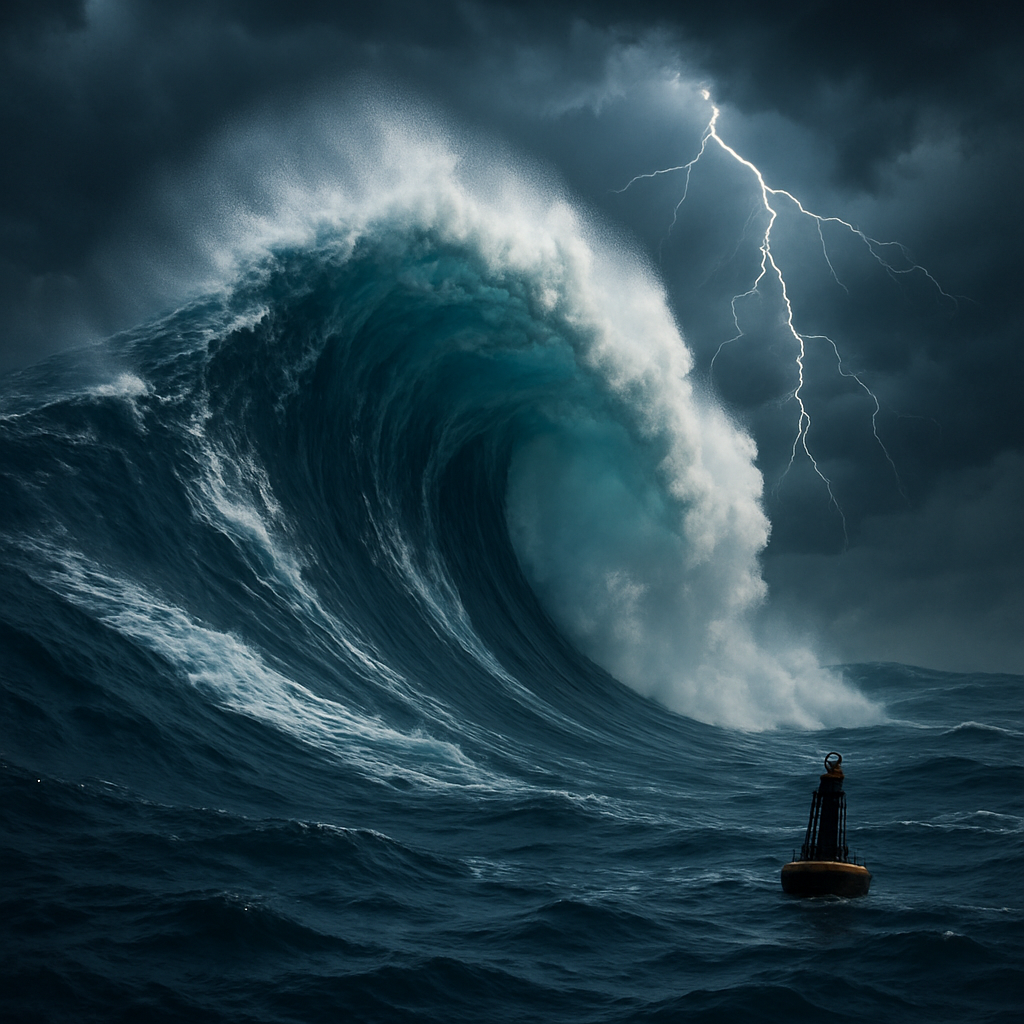The Science Behind Gigantic Rogue Waves and Their Mysterious Origins

Rogue waves those towering, unexpected monsters of the sea have long captured the imagination of sailors, scientists, and landlubbers alike. These waves appear out of nowhere, larger and more ferocious than their surrounding counterparts, at times reaching heights of over 30 meters (that’s nearly 100 feet for those of us who still measure in feet). Their size and suddenness are enough to make even the most seasoned sailor break into a cold sweat. So, what’s the deal with these marine behemoths? Where do they come from, and why do they seem to defy the norms of our oceanic understanding?
Exploring the phenomena of rogue waves is like peeling back layers of an onion each layer brings fresh tears to your eyes, not just from the overwhelming complexity but from sheer wonder. Historically, these waves were considered nothing more than sailors’ tall tales, the kind of stuff you’d hear in a dimly lit tavern over a pint of ale. It wasn’t until the Draupner wave was scientifically recorded off the coast of Norway on New Year’s Day in 1995 that the scientific community began to take these accounts seriously. This event marked the first time direct evidence supported what sailors had been claiming for centuries.
The Science of Giants
Let’s start with some of the physics just the good bits, I promise. In a typical sea state, waves travel together in groups. The waves in these groups generally have relatively consistent heights, but occasionally, through a process known as “constructive interference,” several waves can combine their energies to create a much larger wave. Think of it like a choir; each voice on its own might be lovely, but when the sopranos, altos, tenors, and basses all hit the same note just right, the sound swells in a way that gives you goosebumps. In the case of rogue waves, instead of an auditory crescendo, you get a vertical wall of water.
But here’s the kicker: while constructive interference plays a role, it doesn’t tell the whole story. Some researchers suggest that the wave dynamics are more akin to quantum mechanics than classical physics. This quantum perspective, specifically the nonlinear Schrödinger equation, helps explain how these waves can become so disproportionately large and energetic. It’s like the ocean is working with a cheat sheet of quantum tricks, conjuring these giants seemingly out of thin air.
The Mysterious Origins
Now, let’s wander into the fog figuratively speaking and explore where these rogue waves might actually come from. You might think a stormy sea would be the perfect breeding ground for rogue waves, and you’d be partially right. Storm conditions can absolutely contribute to their formation. However, rogue waves have been reported on relatively calm seas, too, leaving us scratching our heads.
Several theories attempt to explain this. One idea involves the interaction of different wave systems. When waves generated by distant storms interact with local waves, the resulting pattern can sometimes focus energy into a single, massive wave. It’s a bit like being at a party where two conversations suddenly merge and create a bizarre but fascinating chaos of sound.
Another theory involves ocean currents. The Agulhas Current off the coast of South Africa is notorious for producing rogue waves. When waves travel against strong currents, their wavelengths shorten, and their heights increase, making conditions ripe for a rogue wave to rear its head. I once met a captain who swore that the Agulhas was like the ocean’s version of a wild roller coaster, unpredictable and thrilling but with a touch of terror.
Then there are the reports of rogue waves in the Gulf Stream, where the warm waters can intensify storm systems, adding another layer of complexity. It’s like the ocean is throwing a surprise party for itself, complete with explosive waterworks.
Real-Life Impacts and Surprises
The impact of rogue waves on shipping and offshore structures is not just theoretical. In 2001, the cruise ship MV Bremen was hit by a rogue wave, disabling its power and leaving it adrift near Antarctica. I imagine the passengers must have felt a mix of excitement and dread I’d surely be clutching the rails, eyes wide open, possibly rethinking my choice of vacation.
Despite the terror they can bring, rogue waves have contributed to our understanding of the ocean in ways we hadn’t anticipated. For instance, the study of these waves has led to advances in wave modeling and forecasting. It’s like the ocean is giving us a push to learn more about its mysteries, even if it scares the bejesus out of us sometimes.
A surprising counterargument comes from the field of maritime folklore. Some suggest that rogue waves have been exaggerated by their rarity and drama, a bit like the Loch Ness Monster of the seas. While science has confirmed their existence, skeptics argue that the stories of 30-meter beasts might be the maritime equivalent of a fisherman’s “biggest catch” story.
Still, with the advent of satellite technology and oceanographic buoys, we’re getting better at spotting these waves before they surprise us. Yet, nature has a way of keeping its secrets, and maybe that’s part of the allure. Our understanding remains a work in progress, and perhaps that’s where the real charm lies. With every rogue wave that rears its head, we’re reminded of the ocean’s untamable spirit, constantly challenging us to rethink what we know.
In the end, whether you’re a scientist seeking patterns in chaos or a storyteller spinning tales of the sea, rogue waves offer a fascinating glimpse into the unpredictable nature of our world’s waters. They are a testament to the fact that, no matter how much we learn, the ocean always has a few tricks up its sleeve. So next time you’re by the sea, spare a thought for those rogue waves those enigmatic giants that remind us of nature’s raw, unbridled power.


